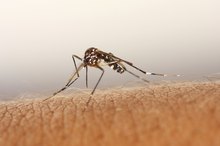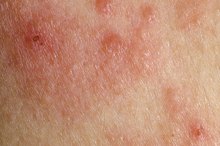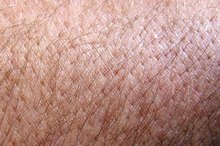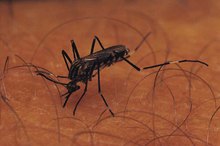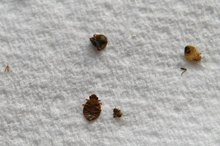What does fact checked mean?
At Healthfully, we strive to deliver objective content that is accurate and up-to-date. Our team periodically reviews articles in order to ensure content quality. The sources cited below consist of evidence from peer-reviewed journals, prominent medical organizations, academic associations, and government data.
The information contained on this site is for informational purposes only, and should not be used as a substitute for the advice of a professional health care provider. Please check with the appropriate physician regarding health questions and concerns. Although we strive to deliver accurate and up-to-date information, no guarantee to that effect is made.
Side Effects of a Bedbug Bite
Bedbugs are approximately 1/4 inch long when fully grown and are flat, oval-shaped non-flying insects that prefer living in and on bedding and sucking the blood of human hosts 1. The side effects of a bedbug bite can be primary or secondary effects, which occur as a result of the unpleasant and frustrating experience of a bedbug encounter or infestation.
Redness and Swelling
After a bedbug makes its mark on you, it's not unusual for a bite to turn red and swell up. While some people may not have any reaction to the bite, others will have noticeable raised, red bumps on their skin. The bumps are close in appearance to a mosquito bite, but often occur in a straight line formation, which indicates that they are bedbug bites.
- After a bedbug makes its mark on you, it's not unusual for a bite to turn red and swell up.
- The bumps are close in appearance to a mosquito bite, but often occur in a straight line formation, which indicates that they are bedbug bites.
Itchiness
Red Itchy Bites on the Skin
Learn More
Depending on the individual, the bedbug bites may be itchy. Some people may experience mild itching, while others may suffer severe itching, blisters and hives. If you have a severe reaction to bedbug bites, you should see a doctor as soon as possible for treatment.
Anxiety and Sleeplessness
As a result of a bedbug infestation in your home or spending the night in a bed infested with bedbugs, you may experience bouts of anxiety and difficulty sleeping 1. The anxiety will stem from worrying about the bugs crawling on you and biting you. This will make it difficult for you to relax and go to sleep.
Secondary Infections or Flu-Like Symptoms
Differences Between Bedbugs & Chiggers
Learn More
If the bedbug bites that you sustain are itchy, you can develop a secondary skin infection if you scratch the bites vigorously. If you have severe itching, it's important to consult with your physician for his advice and treatment. Some people who sustain large numbers of bedbug bites may experience flu-like symptoms -- body aches, tiredness, fever, headache, runny nose -- due to the saliva that the bedbugs inject into the skin when they bite to feed 1.
Related Articles
References
- Mayo Clinic: Bedbugs
- Doggett SL, Dwyer DE, Peñas PF, Russell RC. Bed bugs: clinical relevance and control options. Clin Microbiol Rev. 2012;25(1):164-92.
- Bed bugs: Diagnosis and treatment. Aad.org. Published 2019.
- Studdiford JS, Conniff KM, Trayes KP, Tully AS. Bedbug infestation. Am Fam Physician. 2012;86(7):653-8.
- Puckett, R., McDonald, D., & Gold, R. (2013). Comparison of multiple steam treatment durations for control of bed bugs (Cimex lectulariusL.). Pest Management Science, 69(9), 1061-1065. doi: 10.1002/ps.3467
- Criado, P., Junior, W., Criado, R., e Silva, R., & Vasconcellos, C. (2011). Bedbugs (Cimicidae infestation): the worldwide renaissance of an old partner of human kind. The Brazilian Journal Of Infectious Diseases, 15(1), 74-80. doi:10.1016/s1413-8670(11)70144-1
Writer Bio
Based in Texas, Cynthia Measom has been writing various parenting, business and finance and education articles since 2011. Her articles have appeared on websites such as The Bump and Motley Fool. Measom received a Bachelor of Arts in English from the University of Texas at Austin.
